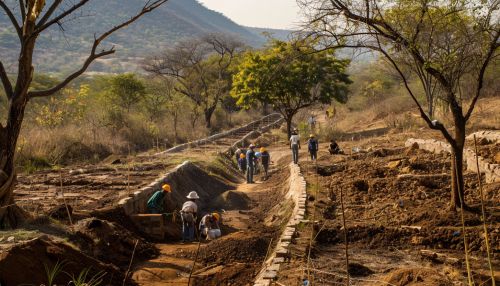Conservation management plan
Introduction
A Conservation Management Plan (CMP) is a document that outlines the significant values of a site and provides guidelines to prevent or minimize harm. It is a tool used in the field of cultural heritage management and environmental conservation to ensure the long-term preservation of the site's values. CMPs are often used for sites of cultural or natural significance, such as World Heritage Sites, national parks, and historic buildings.
Purpose and Scope
The primary purpose of a CMP is to guide the management of a site in a way that will conserve its significant values for future generations. This involves understanding the site's values, identifying threats to these values, and developing strategies to mitigate these threats. The scope of a CMP can vary greatly depending on the nature of the site and its values. It may cover a single building, a landscape, a large natural area, or even a whole region.
Development of a Conservation Management Plan
The development of a CMP involves a systematic process that includes research, consultation, analysis, and documentation. This process is often guided by international standards and principles, such as those outlined in the Burra Charter.
Research
The first step in developing a CMP is to conduct thorough research to understand the site and its values. This may involve historical research, archaeological investigations, ecological surveys, and other forms of study. The research should aim to identify the site's significant values, which may include historical, architectural, archaeological, ecological, social, or other types of value.
Consultation
Consultation with stakeholders is a crucial part of the CMP development process. Stakeholders may include the site's owners, managers, users, local community, indigenous groups, and others who have an interest in the site. The consultation process should aim to understand their views and concerns, and to involve them in decision-making.
Analysis
The analysis stage involves assessing the site's condition, identifying threats to its values, and evaluating the effectiveness of existing management practices. This may involve technical assessments, risk assessments, and other forms of analysis. The analysis should aim to identify any gaps or weaknesses in the current management of the site, and to provide a basis for developing new strategies.
Documentation
The final stage in the development of a CMP is to document the findings and recommendations in a clear and accessible format. The CMP should include a statement of significance, a description of the site's condition, an assessment of threats, and a set of management guidelines. The CMP should be regularly reviewed and updated to reflect changes in the site's condition or circumstances.
Management Guidelines
The management guidelines in a CMP provide a framework for decision-making and action to conserve the site's values. These guidelines may cover a wide range of issues, including physical conservation, use and access, interpretation, and ongoing management.
Physical Conservation
Physical conservation involves the preservation, repair, and maintenance of the site's physical fabric. This may involve conservation works, restoration projects, or routine maintenance activities. The CMP should provide clear guidelines for these activities to ensure that they do not harm the site's values.
Use and Access
Use and access involve the ways in which people interact with the site. This may involve public access, tourism, educational use, ceremonial use, or other types of use. The CMP should provide guidelines for managing use and access in a way that respects the site's values and enhances people's understanding and appreciation of these values.
Interpretation
Interpretation involves the ways in which the site's values are communicated to people. This may involve signage, exhibits, publications, digital media, or other forms of interpretation. The CMP should provide guidelines for interpretation that are accurate, engaging, and respectful of the site's values.
Ongoing Management
Ongoing management involves the day-to-day activities that support the conservation of the site. This may involve staffing, funding, administration, monitoring, and other forms of management. The CMP should provide guidelines for ongoing management that are efficient, effective, and sustainable.


Conclusion
A Conservation Management Plan is a vital tool for conserving sites of cultural or natural significance. By providing a clear understanding of the site's values and a framework for their conservation, a CMP can help to ensure that these sites are preserved for the enjoyment and understanding of future generations.
